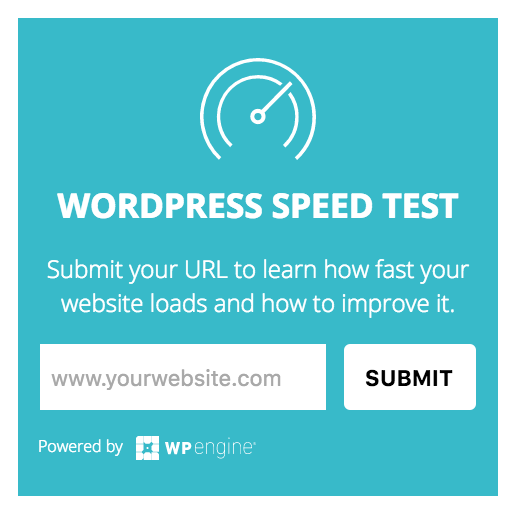Google has been driving at full speed since 2015 to help developers, website owners and businesses optimize their webpages for mobile users. They’ve been increasing their efforts on virtually all things mobile, and have even added 2 new major projects, namely Progressive Web Apps and Accelerated Mobile Pages.
Today we will look closer at Progressive Web Apps (PWA) and explore exactly what they are, how they work, and more importantly – whether your website or business should implement them yourselves.
While it is an emerging technology that shows great promise, PWA’s in their current state are not going to be useful for all types of websites. There are many reasons to install PWA’s, but equally, there are plenty of reasons why one should either wait a while, or disregard the technology all together.
What is a Progressive Web App?
A PWA is made up of a few different elements, but it has to be implemented on an already existing website. It is not 100% standalone, since it requires the website data, or at the very least, a database which can then output the entries to a JSON format.
All Progressive Web App’s require 4 things:
1. Secure SSL connection 2. Visited twice by the user 3. Service Worker installed
4. JSON Manifest installed
These are all technical implementations, apart from point #2, which gets registered automatically via the browser. The remaining 3 points are up to the individual website developers to code and install.
Once installed, the website will work as before, with added features if the user goes offline during or after the first visit to the page, added functionality of Push Notifications on smartphones and tablets, and the possibility to access certain hardware features on devices as well. This way the best parts of both websites and mobile applications are being utilized in harmony. Why use PWA’s
Imagine what happens when you go to a website, load the page and then unplug your internet. Almost all websites today will simply stop working. Some browsers show offline messages, while others might show something like this:
Chrome Browser, Offline screen.
This screen is not very user friendly, and certainly does not do anything positive with the user experience. Furthermore, users are likely to close the tab or browser as soon as they see this screen, resulting in a negative visit from a statistical point of view.
By using a PWA, you can show your website normally, even if the user disconnects their internet, or their ISP has problems with intermittent access, or even just really slow internet causing images to not load, videos to show as broken and all the things that can go wrong with bad internet access.
Opera’s developer site when viewed in offline mode. Much prettier than the above example, don’t you think?
Another important part of what a Progressive Web App is, has to do with the built in “Add to Home Screen” prompts that browsers will show their users. Just think of normal internet bookmarks in your browser.
Imagine instead of going to the bookmark hotbar, the bookmark is now placed on your home screen on your phone or tablet, just like a normal, downloadable app, but without the need to upload your app to App Stores, allowing for fast updates and bug fixes as well!
The Washington Post has a great PWA already working.
Last but not least, an important part of the Progressive Web App movement has to do with caching content. Not only will caching content enable users to access the pages in offline mode, it will do so much faster than normal websites, because everything needed is stored locally, thereby requiring few if any downloads every time a new page is visited.
This is important for many reasons, such as bounce rate, performance and load times, SEO to just name a few.
The 8 main reasons for using Progressive Web Apps
Okay, so now we’ve gone over what PWA’s are, and why one should use them, let’s list 10 reasons why you should consider using PWA’s on your website.
1. Better speed and performance compared to websites
Because everything is cached in what is known technically as an “app shell,” the contents will load fast, almost instantly in some cases, allowing for better user experiences, better search engine rankings, lower bounce rates and higher conversion rates.
2. Security
Since PWA’s require the use of a secure TLS connection, visitors can feel extra safe knowing that they won’t have their data transmitted over insecure lines, and it eliminates the possibility of many known hacks and takeovers, such as spoofing, middle-man attacks and so on.
3. Offline capabilities
As mentioned earlier, having offline capabilities just like a regular mobile application is of great benefit to users in countries with paid data plans, for visitors browsing on mobile phones during transportation where the signal might come and go, and for all the other scenarios in which someone browsing your website might suddenly lose internet connection.
4. Add to Home Screen
By letting visitors install a Home Screen icon on their Android devices, chances are much larger that the website will be visited again, compared to people bookmarking the page. Furthermore, by having the browser itself ask if the users want to install the Progressive Web App, it is much more likely that they will do so, compared to them adding a bookmark out of their own initiative.
5. Push Notifications
The possibility of serving push notifications to all users with the PWA installed can create some very interesting marketing strategies and tactics. Compare these notifications to e-mail newsletters, and ask yourself which you are more likely to check at any given time.
If done right, push notifications can help with retention rates, and conversions, since every time a new product, service, article or blog post is released, users can be notified directly on their phones, without having to open the app or website.
6. Combining the best of both worlds
We all know and love websites for their instant availability, we don’t have to download anything, register users or log on, in order to access them. Furthermore, websites can push new updates immediately.
On the other hand, we like mobile applications because everything is contained within the app, and it can be used without internet, anywhere in the world. Mobile apps also have great features such as push notifications, hardware access to the camera, microphone and so on.
PWA’s can do all of the above, and are therefore interesting for anyone seeing the benefits of either websites or mobile applications, and wanting something more.
7. No App Store rejections/submissions
Without the app store reviews, website owners are able to update their Progressive Web Apps immediately, allowing for instant bug fixes, regular new content and an overall better user experience.
Furthermore, since it is possible to add the PWA to Home Screens, the only thing website owners will miss from App Stores are the search functions, but since Google will now crawl the results of PWA’s, there’s better options to get found online than via the App Stores anyway.
8. Hardware access
Just like hybrid mobile apps, PWA’s can access most of the common hardware features in both Android phones, Windows phones, and even certain iPhone features. This means that we can have a website with offline capabilities, able to record your voice, capture your images, all from the comfort of website publishing alone.
Conclusion
Rounding off, I’d like to add that not all websites stand to gain from PWA’s. Currently, if you’re using advertisements on your website as a main revenue stream, it might be wise not to implement the Progressive Web Apps, since users in offline mode won’t add to your revenue.
Conversely, if you are using subscription based services, it might be wise to let users download a PWA of all paid-for content, allowing them to access that data anywhere, anytime.
For now, it seems news outlets are the ones most fond of Progressive Web Apps, followed closely by App-like services providing unique custom code that resembles regular apps. Normal e-commerce websites are also ideal for PWA’s, since users can browse leisurely in their own time, and with the app icon on their Home Screen, it allows for great branding and re-engagement possibilities.

